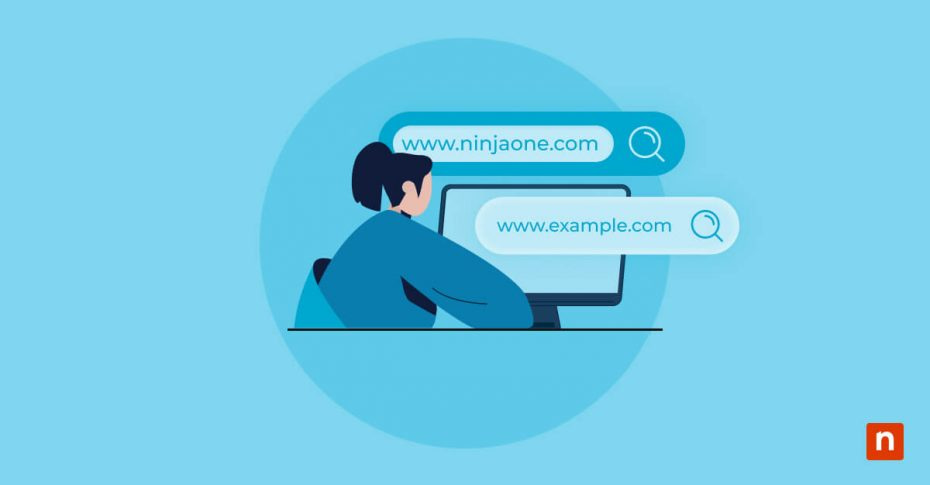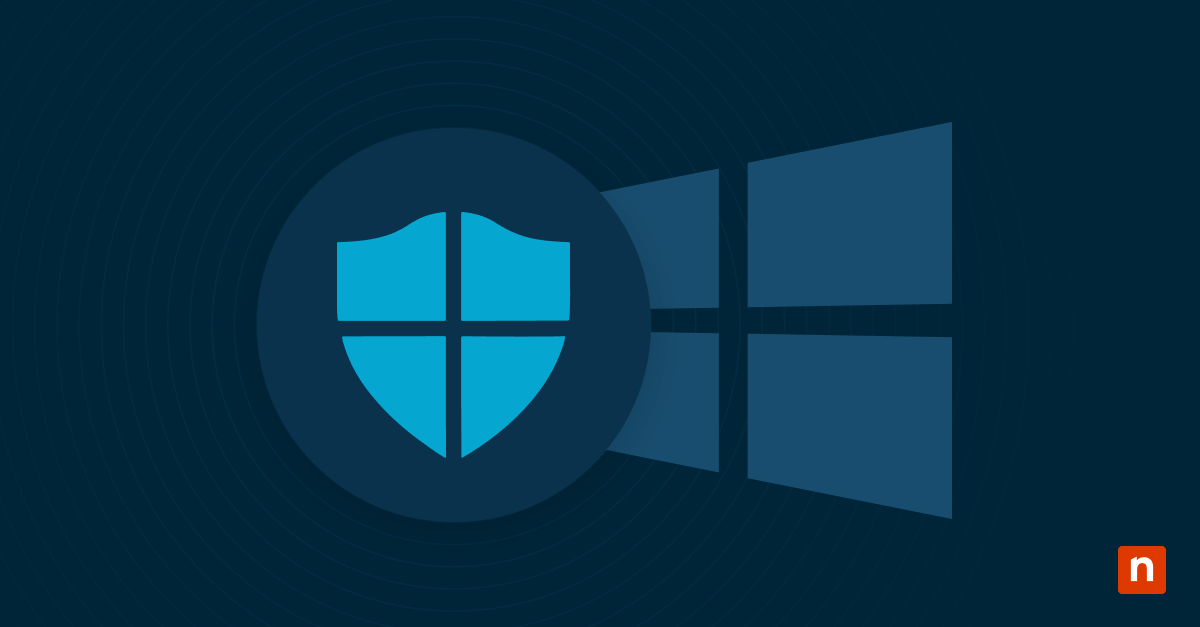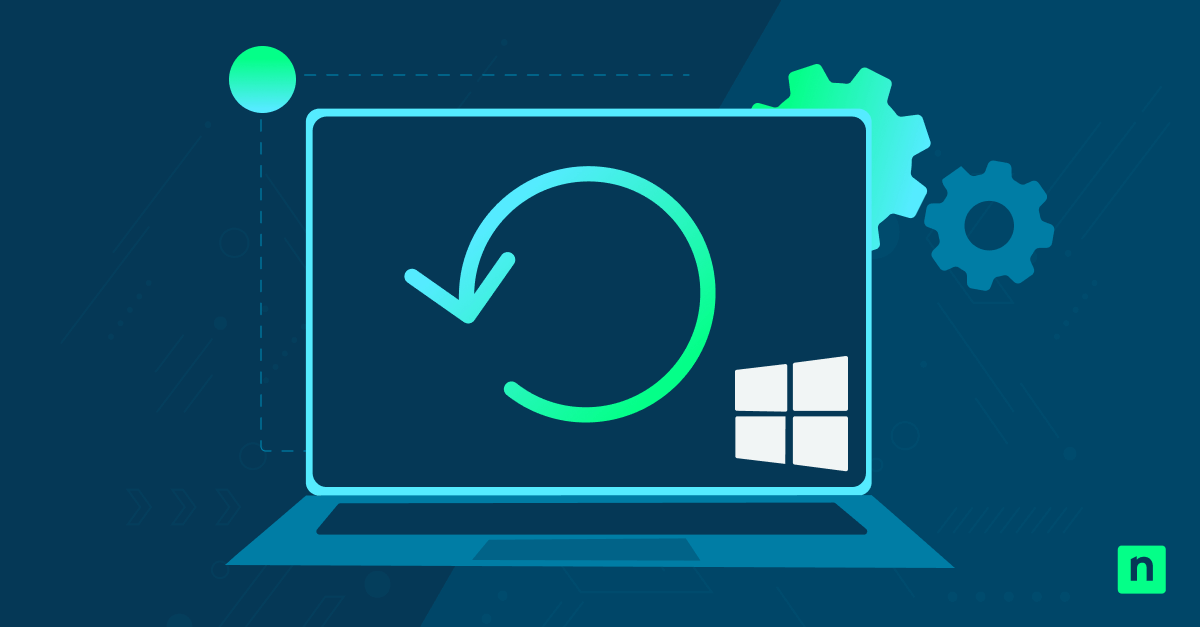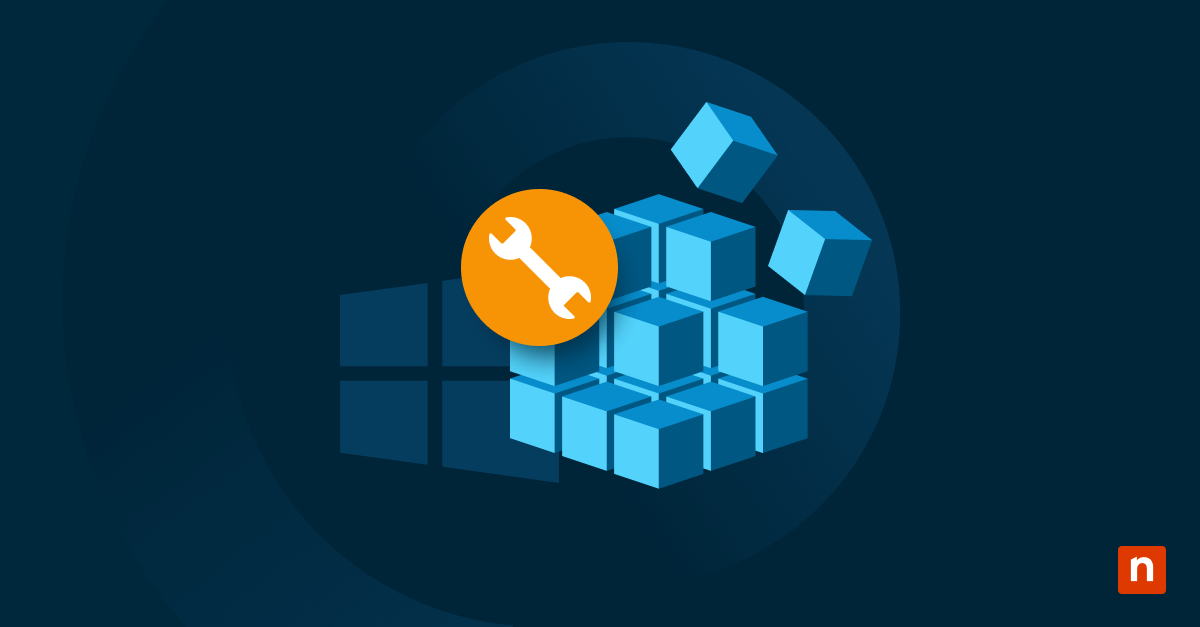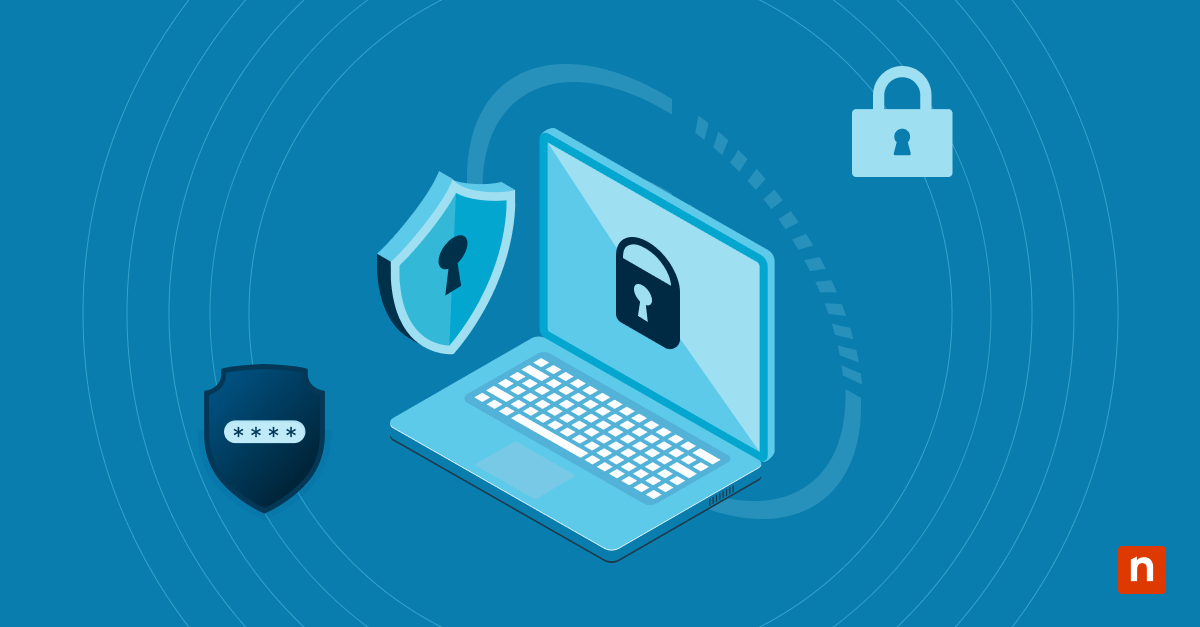Before the introduction of fully qualified domain names (FQDNs), managing and accessing networked devices relied on numerical IP addresses alone, which was cumbersome and prone to errors. FQDNs allow for more user-friendly and memorable IP addresses, facilitating easier access and management of internet resources.
What is an FQDN?
A fully qualified domain name identifies the precise location of a resource on the internet. Unlike a simple domain name, an FQDN provides a complete address that includes the hostname, domain name and top-level domain (TLD). This comprehensive address makes sure there’s no ambiguity about the server or resource being accessed and provides accurate and reliable internet communication.
💻 Gain real-time visibility into all your SNMP network devices with NinjaOne Network Monitoring & Management.
Components of a fully qualified domain name
A fully qualified domain name consists of several key components that work together to create a unique and complete address on the internet:
Hostname
The hostname is the first part of the FQDN and identifies a specific device or server within a domain, which assists in directing internet traffic accurately. It is often used to denote the type of service the server provides. For example, “www” typically represents a web server, while “mail” might represent an email server.
Domain name
Following the hostname is the domain name, which usually represents the organization or entity that owns and manages the server and establishes a branded presence on the internet. The domain name is a critical part of the FQDN because it provides a recognizable identity for the organization. In the example, www.example.com, “example” is the domain name.
Top-level domain
The top-level domain (TLD) is the final component of the FQDN and appears at the end of the address. The TLD indicates the type of organization, purpose or geographical area associated with the domain and can provide insight into the nature of the website or service. Common TLDs include .com, .org, .net and country-specific codes like .uk or .jp. In the FQDN www.example.com, “.com” is the TLD.
How to find a fully qualified domain name
Whether you’re an IT professional or someone managing internet-connected devices, you should understand how to find a fully qualified domain name. Here are a few ways to identify the FQDN on different operating systems.
Windows
Here’s how to check a fully qualified domain name in Windows:
- Open the Control Panel.
- Click on “System and Security,” then select “System.”
- Under “Device specifications,” you will see the “Full device name,” which includes the FQDN.
Alternatively, you can use the Command Prompt:
- Open Command Prompt.
- Type hostname and press Enter to get the hostname.
- Combine this with the domain name to get the FQDN. You can find the domain name by typing ipconfig /all and looking under the “Primary DNS Suffix.”
macOS
To find an FQDN on macOS:
- Click on the Apple menu and select “System Settings.”
- Click on “General,” then select “About.”
- The full computer name or FQDN will be displayed at the top.
Alternatively, you can use the Terminal:
- Open Terminal.
- Type hostname -f and press Enter. This command will return the FQDN.
Linux
On a Linux system, you can find the FQDN using the Terminal:
- Open Terminal.
- Type hostname -A and press Enter. This command will display the FQDN. The “-A” is case-sensitive and ensures the full domain name is shown.
Benefits of using a fully qualified domain name
Fully qualified domain names offer several benefits for network management, security and overall system efficiency. Here are some of the ways FQDNs will help you make the most of your network resources:
Improved network security
Using FQDNs enhances network security by providing clear and precise identification of devices and services. This specificity helps prevent unauthorized access and guarantees that only trusted devices can communicate within your network. FQDNs can also be used in security policies to allow or deny traffic to specific domains, adding an extra layer of security.
Enhanced clarity and organization in domain management
FQDNs bring clarity and organization to domain management by uniquely identifying each device or service within a domain. This clarity simplifies how you manage large networks, where multiple devices and services might otherwise be confusing. With FQDNs, administrators can quickly pinpoint and manage resources, improving overall efficiency.
Simplified troubleshooting and diagnostics
When troubleshooting network issues, having an FQDN makes it easier to identify and resolve problems. FQDNs give you complete information about the location of a device or service, allowing for more accurate diagnostics. This specificity reduces the time spent searching for issues, leading to quicker resolutions and less downtime.
Better DNS management
FQDNs improve DNS management by ensuring that each device or service has a unique and recognizable name. This uniqueness prevents conflicts and keeps DNS records accurate and up-to-date.
The role of FQDNs in cloud services and virtual environments
Fully qualified domain names now play a role in the management and operation of cloud services and virtual environments. In cloud computing, FQDNs provide a consistent and human-readable way to address resources such as virtual machines, storage services and databases. This consistency helps you automate, deploy and scale processes, where dynamic IP addresses might change frequently.
Using FQDNs in virtual environments provides seamless connectivity and accessibility. When you create virtual machines (VMs) or move them within a cloud infrastructure, their IP addresses can change, but their FQDNs remain constant. This stability simplifies configuration management and service orchestration, allowing for more reliable and predictable operations.
FQDNs also enhance cloud security by providing you with precise access controls and network policies. Administrators can define rules based on FQDNs to restrict access to specific services or VMs, ensuring that only authorized entities can connect.
NinjaOne Network Monitoring & Management is custom-built into its #1 RMM tool so everything plays nicely together.
Learn more about IPConfig and why does it matter – watch now.
Common use cases for fully qualified domain names
What else is an FQDN used for? One common use case is connecting to remote hosts. When you access a remote server, the DNS resolves the FQDN to its corresponding IP address, ensuring that you reach the correct destination. For example, if you connect to a server using only the hostname, such as “example” instead of “example.com,” the DNS may return an error. Using the full FQDN ensures successful connections, particularly when the server is outside your local network.
FQDNs are helpful when migrating to a new server. You can use an FQDN instead of an IP address for seamless DNS record updates, preventing communication issues and outages that can occur when changing IP addresses. Additionally, FQDNs can help with brand promotion by clearly identifying a website’s identity, location and presence.
You can improve search engine optimization (SEO) rankings by using FQDNs to make websites more discoverable in search engines. They are also necessary for accessing domain services like email or File Transfer Protocol (FTP).
Overall, FQDNs are both useful and versatile. They play a role in the seamless operation of various internet services and ensure that domain resources are efficiently and accurately accessed.

